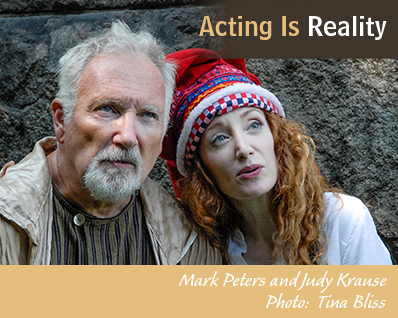 “Imagination is the act or power of forming mental images of that which is absent,” writes John Strasberg in the discussion of the third of his Nine Natural Laws of Creativity.
“Imagination is the act or power of forming mental images of that which is absent,” writes John Strasberg in the discussion of the third of his Nine Natural Laws of Creativity.
In general usage the word “imagination” takes on a wide variety of meanings. Imagining can be spontaneous, or deliberate. It can occupy your attention or not.
Philosophers Gregory Currie and Ian Ravenscroft distinguish between “creative” imagination, which involves making new combinations of ideas or objects, “sensory” imagination, which produces something like perception, but in absence of the usual stimuli, and “recreative” imagination, which is an ability to experience the world from a perspective that is different from one’s actual experience.
Bernard Williams distinguishes between imagining “from the inside” and “from the outside.”
Applying Williams’ categories to acting, imagining from the outside that I am a character would involve imagining a scenario in which I am the character. Imagining from the inside that I am the character adds the condition that I adopt the perspective of the character.
Another useful way to look at imagination is in terms of the structure and content of the imaginings. For instance, one can imagine that something is the case – Peer Gynt imagines himself to be in a hall of trolls; one can represent something to oneself – Bottom in Midsummer Nights Dream says “This man represents a wall;” or one can imagine an activity or experience such as seeing someone or going somewhere.
Strasberg distinguishes between imagination and intentional dreaming. Developing an actor’s imagination is more difficult than developing talent and perception, he writes, because the latter two “are more easily connected to training an actor to intentionally dream.” Entities can exist in the actor’s dream space, but will only attach to “here and now realities” if imagination discovers them.
Modern neuroscience has established that conscious imagining and dreaming originate in different parts of the brain – conscious imagining in the pre-frontal cortex, and dreaming in the posterior cortex. Yet the result, the formation of a new image or sequence of images, can be identical as objects from memory are combined in novel ways.
And although traditionally imagination has been viewed in contrast to rational thinking, more recent psychological research identifies imagination as a fundamental component of mental activity in its own right – one of the bases for “future oriented behavior.” “Human action is based on an imaginative reconstruction of the past in function of an imagined future,” psychologist and communication researcher Luca Tateo wrote in 2015.
Strasberg concludes his section on imagination with the observation that, when language is inadequate for expressing what we feel and perceive, “the imagination and perception of art and science” can offer a path of liberation and community.
